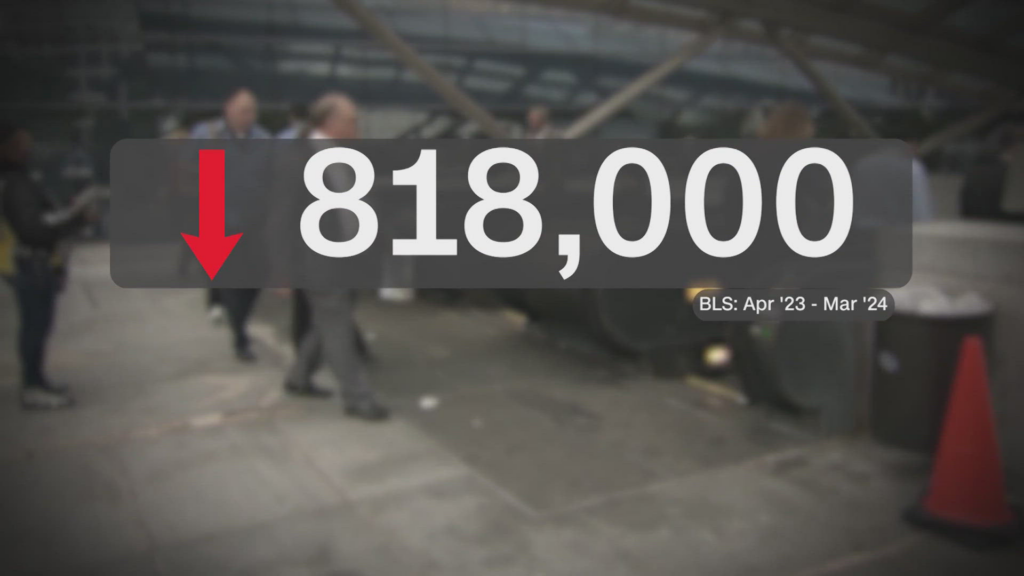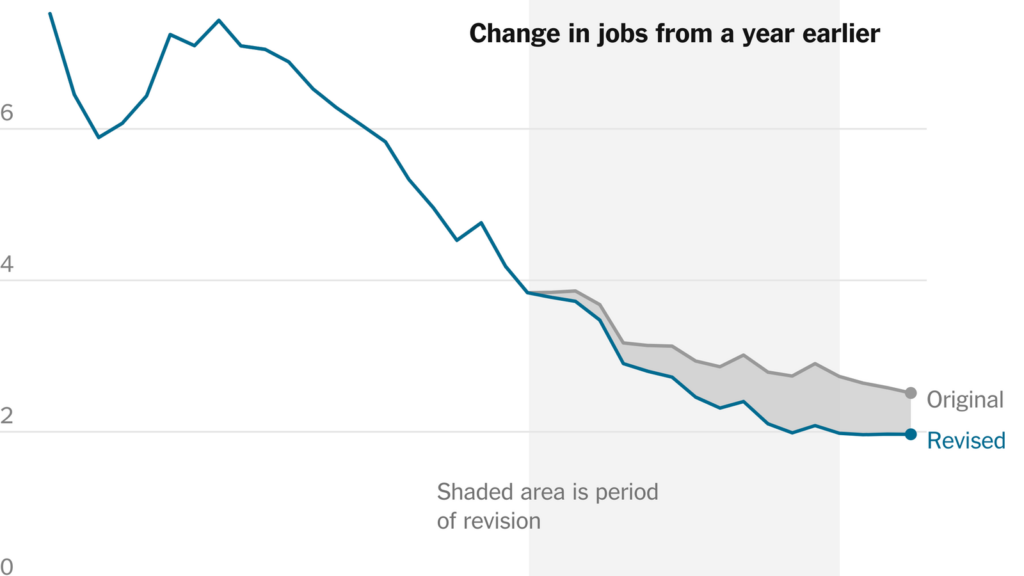n recent months, the U.S. economy added over 800,000 fewer jobs than originally reported, the Labor Department said this week.

On Wednesday, the Associated Press (AP) reported that new data from the U.S. Department of Labor showed that from April to March 2023, the U.S. economy added 818,000 fewer jobs than previously announced. The updated figures further indicate a steady slowdown in the job market, likely supporting the Federal Reserve’s plans to begin cutting interest rates in the near future.
According to data released by the Labor Department, job growth averaged around 174,000 per month, in the year ended in March 2023. This figure represents a decline of 68,000 a month from the 242,000 that were previously reported by the Labor Department.
The data released on Wednesday is still preliminary and final figures are expected to be released in February.

The revised estimate comes after a disappointing July jobs report, prompting many economists to argue that the Federal Reserve waited too long to start cutting interest rates. The unemployment rate climbed for the fourth consecutive month, reaching 4.3 percent, while employers added just 114,000 jobs.
Earlier this month, the U.S. Labor Department also released data showing a decline in the number of Americans applying for unemployment benefits. The data showed a decline of 7,000 from one week compared to the previous, for the number of Americans applying for unemployment benefits.

According to the data, 1.86 million Americans are collecting jobless benefits for the week ending on August 3. The Labor Department report also showed that the four-week average for unemployment claims decreased by 4,500 to 236,500.
Throughout 2022 and 2023, the Federal Reserve increased its benchmark rate 11 different times, in an effort to fight ongoing inflation throughout the U.S. In June 2022, year-over-year inflation dropped from 9.1 percent to 2.9 percent, allowing the Fed to look to cut rates in the coming months.

The revised hiring estimates released Wednesday aim to more accurately reflect the impact of new businesses being created and others closing down.

